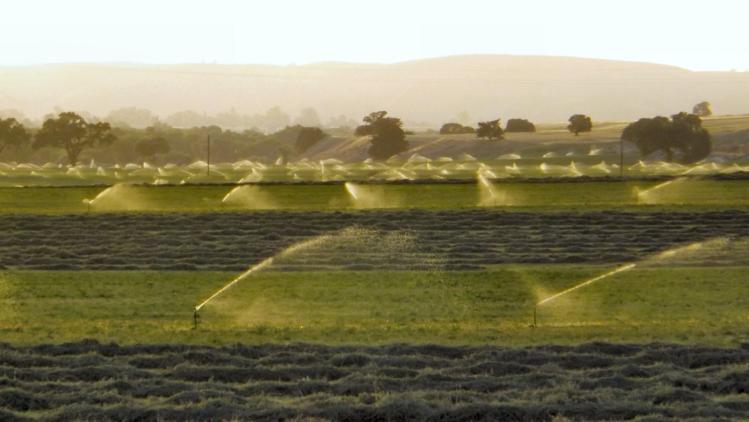
Alfalfa loves the Southwest. In the heat, under the sun, it grows so quickly that it can be harvested up to eight times a year. But alfalfa is thirsty, guzzling trillions of gallons of water per year. In the deserts of Arizona and California, a significant amount of that water comes from the Colorado River, and the river is running dry.
The Southwest is suffering not just from a twenty-year mega-drought, but also from aridification. The river will never rise to its former levels, and the current distribution of its water will become more and more unsustainable as climate change reduces rainfall and raises temperatures, increasing evaporation. The original provision of water distribution, based on the century-old Colorado River Compact, divides water between Upper and Lower Basin states, Indigenous tribes, and Mexico, but many of the farms in the Southwest stake their claims based on even older agreements: places like Blythe, California, have prior water rights dating back to the 1870s. This grants farmers in Blythe unlimited access to extraordinarily cheap water (as long as it’s used for “beneficial” purposes like farming, the farmers pay only the water district’s overhead), while growing cities pay substantially more and Mexicans at the southern tip of the river are left with almost no water.
The entire system is only possible because of government-funded dams and dikes built in the 1930s, which funneled enormous amounts of taxpayer money into what is now a subsidy for farmers—who use 80 percent of the region’s water—and the industries they supply: dairy and beef. And the beneficiaries are not all American. Sixteen percent of the valley in Blythe is owned by a Saudi Arabian company that exports its alfalfa to feed cattle halfway across the globe, and farms in Arizona that rely on shrinking groundwater aquifers are leased to Saudis at shockingly cheap rates. (In Saudi Arabia, alfalfa farming is illegal because it’s too water-intensive.) It isn’t just the Middle East; U.S. alfalfa exports to China add up to the equivalent of 50 billion gallons of water a year.
Every state in the basin except California was forced to make water cuts in 2019 in the wake of drought protocols for Lake Mead, but senior water rights remain unaffected and states like Arizona resorted to using equally unsustainable groundwater reserves instead. Some states have begun paying farmers to fallow their fields, or paying them for the water they don’t use. In 2021, Arizona finally rolled back the “use it or lose it” policy that incentivized farmers to maximize water use regardless of how much they really needed. The Biden administration has also put pressure on all the basin states to significantly reduce their water use by mid-2023; otherwise, the federal government will begin dictating cuts. So far, states have been reluctant to suggest any real plans, and until they do, nothing will force farmers to grow less water-intensive crops or adopt new technologies that would halve the amount of water required to irrigate alfalfa. The true cost of our dwindling Western water supply remains unreflected in dairy and beef prices.
It will always be difficult to muster the political will to make changes that increase consumer prices, and there is no way to reduce water usage to sustainable levels without major cuts to agriculture in the region. But the very least we can do is stop wasting our subsidies on carbon-intensive industries for other countries. Let the Saudis feed their own cows.
Please email comments to [email protected] and join the conversation on our Facebook page.
Share
Previous Story
Legalized Lawlessness
Next Story
Encouraged to Die?